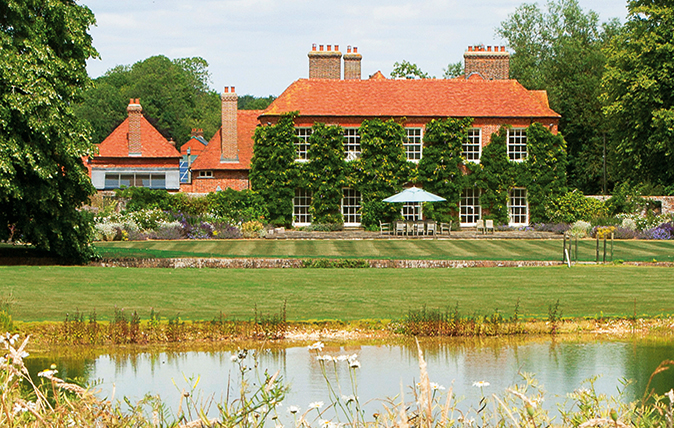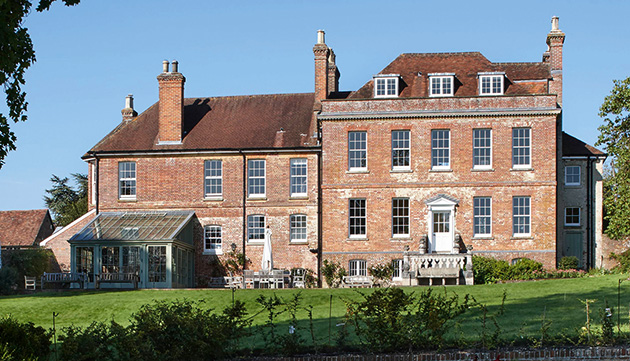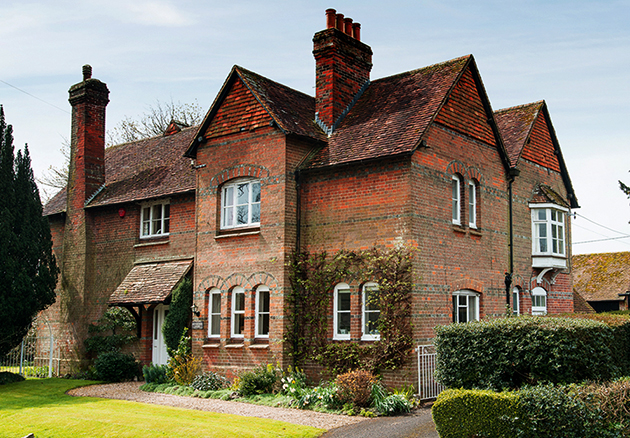Top manor houses on the market
These manor houses need no work at all - they are historic, beautiful and come with very modern bells and whistles


These days, it’s not only the cost of renovating a major country house that scares London buyers—it’s also the cost of running and maintaining it once the work is done. ‘Fortunately, whoever buys Oakley Manor (above) need have no worries on either score,’ says Christian Warman of Savills (020–7016 3822), who quotes a guide price of £10 million to £12 million for the pristine, quintessential Hampshire manor house set in some 52 acres of landscaped gardens, paddocks and woodland on the edge of Church Oakley village, five miles west of Basingstoke and 17 miles from Winchester.
Although the ancient manor of Church Oakley is known to pre-date Domesday, the present Oakley Manor is a classic, Grade II-listed, Georgian country house, built in the 18th century around an earlier core. By the early 19th century, William Hicks Beach was lord of the manor and his family continued to own the Oakley estate until the early 1930s, by which time the manor had been considerably enlarged and the main entrance moved to the east front. The gardens, developed by the Beach family in the early 1900s, were extended by their successors, Mr and Mrs Lewin Hunter, in the 1930s. The present owners, who bought the house in 2008, have refurbished it throughout, using the latest technology to cut running costs to the bone. A raft of innovations includes a wood chip boiler fuelled by timber grown on the estate, a borehole and ultra-sophisticated lighting, audio, security and surveillance systems.
The interior has been cleverly reconfigured to make the most of the manor’s wonderful southerly views and provides some 12,800sq ft of well-proportioned accommodation, including entrance and reception halls, three main reception rooms, a kitchen/ breakfast room, five bedroom suites and a self-contained annexe on the first floor, with two further suites on the second floor and a gym and indoor swimming pool located in the west wing.
The house comes with three cottages, extensive outbuildings, stables, garaging and hard and grass tennis courts. The manor’s magnificent gardens and grounds have been meticulously redesigned by Winchester-based Taylor Tripp. The pièce de résistance is probably the wildlife pond designed for open-water swimming or boating, with a sandy beach at one end and an island in the middle.

The restoration of another classic Hampshire house, Grade II-listed Fir Hill at Droxford, in the Meon valley between Winchester and Petersfield, has been an 11-year labour of love for London-based lawyer Matthew Hill, who bought the house in poor repair in August 2004. He was later joined in his endeavours by his wife, Georgy Evans, also a lawyer, whom he met in 2007 and married at St Mary and All Saints, Droxford, in 2012. It took a year to obtain the necessary planning consents from Winchester City Council and English Heritage, so it was late 2005 before Mr Hill could embark on the restoration of Fir Hill, its outbuildings and 5.2 acres of gardens leading down to the Meon. The concept was to rebuild the main 1760s house as it was in Georgian times, which meant putting back a Georgian-style oak main staircase, windows and shutters, laying new oak floors and installing period fireplaces where these had been removed. It also entailed reinstating a library.
The Victorian south wing—added in about 1840 and substantially enlarged in 1879—posed more of a challenge. Being poorly constructed in places and a warren of small rooms, the only sensible option, Mr Hill explains, was to rebuild it where necessary, adapting the space for modern living by creating one large kitchen/living area. In the gardens, Victorian and Edwardian planting was removed to regain the wonderful views down to the River Meon. The Victorian games lawn and the Georgian walled garden were both restored and the glasshouse, built in the 1770s by huntsman extraordinaire Tom Smith, has been replaced. Over the years, Fir Hill has been owned or lived in by many high-profile people, among them Admiral Charles Powell Hamilton, a first cousin of Lady Emma Hamilton’s husband, William, and a close friend of Admiral Lord Nelson, who visited the house in 1801 or 1802. All would surely feel at home within the walls of the Fir Hill of 2016.
With the restoration of their masterpiece complete, the owners plan to move back to London and the house is for sale through Strutt & Parker (020–7629 7282) at a guide price of £4.25m. Its 7,900sq ft of romantic living space includes three/four reception rooms, a kitchen/family room, a conservatory, five bedrooms, three bathrooms and a self-contained, one-bedroom apartment.
Sign up for the Country Life Newsletter
Exquisite houses, the beauty of Nature, and how to get the most from your life, straight to your inbox.
‘The perfect Hampshire village house’

For selling agent Philip Blanchard of Jackson-Stops & Staff in Winchester (01962 844299), handsome, Grade II-listed Michaelmas House in the pretty, unspoilt north Hampshire village of Hatherden, three miles from Andover, is ideal for a family moving out of London. He quotes a guide price of £1.25m for the former vicarage, built in about 1860, probably to the design of the Victorian Gothic Revival architect William White, who had previously designed the village church next door. The house was home to a succession of vicars until 1981, when four local benefices were merged, after which Michaelmas House was bought by its current owners.
Surrounded by an enchanting plantsman’s garden lovingly created over the past 30-odd years, Michaelmas House offers just under 3,000sq ft of accommodation, including three main reception rooms, a kitchen/family/ breakfast room, five double bedrooms and a family bathroom, with the option of turning the sixth, single bedroom into a further bathroom.
-
 380 acres and 90 bedrooms on the £25m private island being sold by one of Britain's top music producers
380 acres and 90 bedrooms on the £25m private island being sold by one of Britain's top music producersStormzy, Rihanna and the Rolling Stones are just a part of the story at Osea Island, a dot on the map in the seas off Essex.
By Lotte Brundle Published
-
 'A delicious chance to step back in time and bask in the best of Britain': An insider's guide to The Season
'A delicious chance to step back in time and bask in the best of Britain': An insider's guide to The SeasonHere's how to navigate this summer's top events in style, from those who know best.
By Madeleine Silver Published
